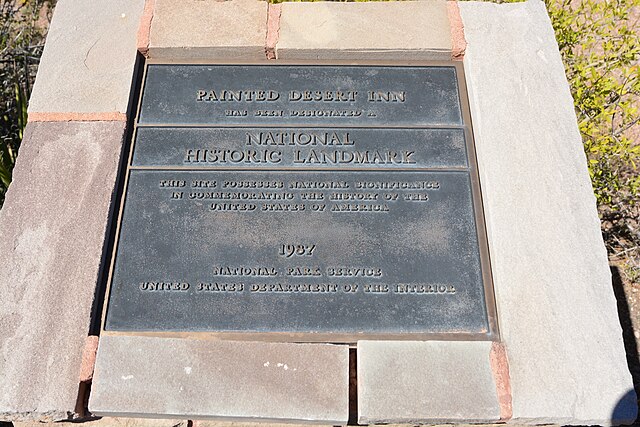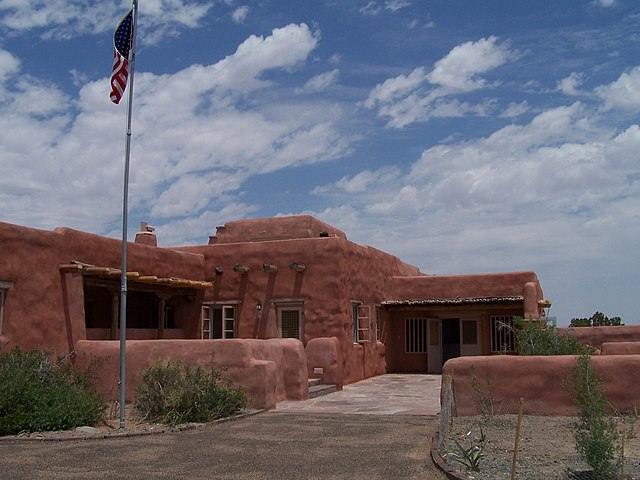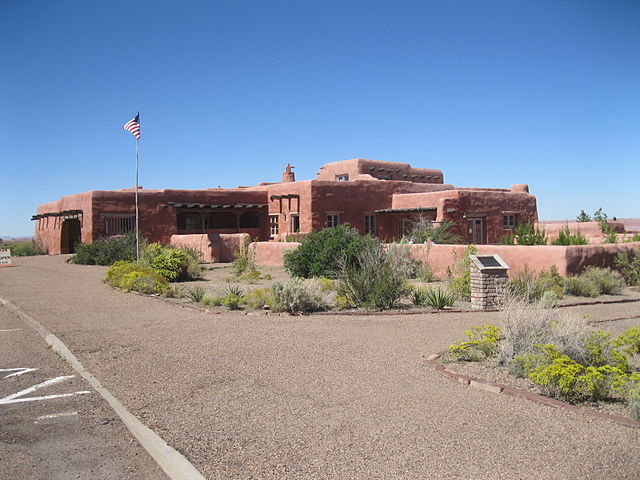Have you ever stood in a place so surreal it feels like you’ve landed on another planet? That’s the magic of Arizona’s Painted Desert, a vibrant masterpiece tucked within Petrified Forest National Park. Spanning over 7,500 square miles, this kaleidoscope of colorful badlands, petrified wood, and ancient history is a bucket-list destination for adventurers, history buffs, and nature lovers alike. Let’s dive into the wonders of this desert dreamscape and uncover why it’s a must-visit in 2025.
Where Is the Painted Desert?
Picture this: you’re cruising along Interstate 40, the wind in your hair, and suddenly, the landscape explodes into a symphony of reds, oranges, pinks, and purples. That’s the Painted Desert, stretching from the Grand Canyon’s eastern edge to the heart of Petrified Forest National Park in northeastern Arizona. It’s a vast, 120-mile-long wonderland, about 60 miles wide, nestled in the Four Corners region where Arizona, New Mexico, Utah, and Colorado meet. The easiest way to explore? Head to the northern entrance of Petrified Forest National Park, just off exit 311 on I-40.
A Glimpse of History: How It Got Its Name
Back in the 1540s, Spanish explorer Francisco Vázquez de Coronado trekked through this vibrant terrain in search of the fabled Seven Cities of Cibola. Instead of gold, he found a landscape so colorful it seemed painted by a divine artist. He dubbed it “El Desierto Pintado,” and the name stuck. Today, this desert’s hues—thanks to iron, manganese, and other minerals in the Chinle Formation—still captivate travelers, just as they did Coronado centuries ago.
Why Visit the Painted Desert?
Why should you detour to this arid wonder? For starters, it’s not just a desert—it’s a time capsule. The Painted Desert offers a front-row seat to 200-million-year-old fossils, petrified logs, and ancient petroglyphs. Add to that its connection to the iconic Route 66, and you’ve got a destination that blends natural beauty with cultural history. Whether you’re a hiker, a photographer, or just someone craving a break from the ordinary, this place has something for you.
A Geological Marvel: The Chinle Formation
The Painted Desert’s vibrant colors come from the Chinle Formation, a geological layer from the Late Triassic period, about 227 to 205 million years ago. Imagine a time when dinosaurs roamed, and this desert was a lush, tropical wetland. Layers of siltstone, mudstone, and shale, rich in iron and manganese, give the badlands their signature reds, purples, and lavenders. Erosion has sculpted these layers into dramatic mesas, buttes, and hills, creating a landscape that feels alive with history.
What Makes the Colors Pop?
Ever wonder why the desert looks like a painter’s palette? The iron and manganese compounds act like natural pigments, while volcanic ash and silica add to the mix, creating petrified logs that shimmer in the sunlight. The best time to see these colors? Visit during sunrise or sunset when the light enhances the hues, making every hill glow like a work of art.
Top Things to Do in the Painted Desert

Ready to explore? The Painted Desert offers a range of activities, from scenic drives to backcountry adventures. Here’s a rundown of the must-do experiences that’ll make your trip unforgettable.
Drive the Scenic Park Road
The 28-mile Main Park Road through Petrified Forest National Park is your ticket to the Painted Desert’s heart. Start at the Painted Desert Visitor Center and cruise past viewpoints like Tiponi, Tawa, and Kachina Points. Each stop offers jaw-dropping vistas of colorful badlands. Got a camera? You’ll want to stop at every pullout to capture the magic. The drive takes about 45 minutes without stops, but trust me, you’ll want to linger.
Hike the Painted Desert Rim Trail
For a closer look, lace up your hiking boots and hit the Painted Desert Rim Trail. This easy, 0.5-mile one-way trail starts at Tawa Point and winds along the canyon rim to Kachina Point, offering panoramic views of the badlands. It’s kid-friendly and perfect for casual hikers. Want a longer adventure? Combine it with the Tawa Trail for a 3.4-mile loop from the Painted Desert Visitor Center. The trail’s gentle terrain and stunning scenery make it a highlight for any visitor.
Pro Tip: Beat the Heat
The desert can get toasty, with summer highs hitting 100°F. Hike early in the morning or late afternoon to avoid the midday sun. Bring plenty of water, sunscreen, and a hat—there’s little shade out here!
Explore the Painted Desert Inn
Step back in time at the Painted Desert Inn, a National Historic Landmark perched on a mesa overlooking the desert. Built in the 1920s by Herbert Lore, this Pueblo Revival-style inn once served Route 66 travelers. Today, it’s a museum showcasing Hopi artist Fred Kabotie’s murals and a stunning mountain lion petroglyph. The inn’s hammered-tin chandeliers and colorful skylights are worth the visit alone. It’s a perfect blend of history and art, with views that’ll leave you speechless.
Discover Route 66 History
Did you know the Painted Desert is home to the only national park protecting a section of historic Route 66? Near the north entrance, you’ll spot a rusting 1932 Studebaker, a nod to the “Mother Road.” Stop for a photo and imagine the travelers who cruised this iconic highway decades ago. It’s a slice of Americana you won’t find anywhere else.
Puerco Pueblo: A Glimpse into Ancient Life
History buffs, this one’s for you. The Puerco Pueblo, a short 0.3-mile loop trail, takes you through the ruins of a 13th-century Native American village. Home to about 200 people at its peak, this site features petroglyphs etched into rocks, offering a window into ancient life. The petroglyphs, some over 2,000 years old, are a reminder of the desert’s deep cultural roots. Bring binoculars to spot the intricate designs from a distance.
Chasing Fossils and Petrified Wood
The Painted Desert isn’t just about colors—it’s a fossil hunter’s paradise. The southern section of Petrified Forest National Park is packed with petrified logs, remnants of a prehistoric forest from 225 million years ago. Trails like the Giant Logs Trail (0.3 miles) and Long Logs Trail (2.6 miles) let you walk among these ancient trees, now turned to stone by silica and volcanic ash. It’s like stepping into a Jurassic Park scene, minus the dinosaurs.
Respect the Land: Leave No Trace
Tempted to take a piece of petrified wood home? Don’t. Removing fossils is illegal and harms the park’s ecosystem. Instead, snap photos and visit the gift shops at the Painted Desert or Rainbow Forest Visitor Centers for ethically sourced souvenirs. Let’s keep this wonderland pristine for future explorers.
Backcountry Adventures for the Bold
Craving an off-the-grid experience? The Petrified Forest Wilderness Area, accessible from Kachina Point, offers rugged hiking and backpacking. Trails like the 7-mile Wilderness Loop or the 4-mile Onyx Bridge hike take you deep into the Black Forest, where petrified logs and colorful badlands await. You’ll need a permit for overnight trips in the Navajo Nation section, but day hikes are open to all. It’s a chance to feel like an explorer in a forgotten world.
Stargazing: A Night Under the Desert Sky

When the sun sets, the Painted Desert transforms into a stargazer’s paradise. The park’s remote location and minimal light pollution make it ideal for spotting constellations. Join a ranger-led stargazing program (check the park’s website for schedules) or find a quiet spot along Route 77 just outside the park. The Milky Way stretching across the sky is a sight you won’t forget.
Plan for Park Hours
The park closes at 5 p.m. MST, so plan your stargazing outside park boundaries. Route 77 or nearby overlooks like the Little Painted Desert County Park are great alternatives for sunset and starry nights.
Best Time to Visit the Painted Desert
Timing is everything. Spring (March-May) and fall (September-November) offer mild weather, perfect for hiking and exploring. Summer brings intense heat, while winters are chilly but snow-free, with highs in the 40s and 50s. For vibrant colors, aim for sunrise or sunset visits, especially after a rare desert rain when the landscape sparkles.
Where to Stay: Holbrook and Beyond
Holbrook, a 30-minute drive from the park, is your best bet for lodging. This quirky Route 66 town offers motels with mid-century charm, like the Wigwam Motel, where you can sleep in a concrete teepee. For a more historic vibe, check out La Posada, a restored Harvey House hotel. Camping is limited in the park, but nearby Holbrook has RV parks and campgrounds for outdoor enthusiasts.
Tips for a Perfect Painted Desert Adventure

Planning your trip? Here are some insider tips to make it smooth sailing. First, pack snacks and water—there’s no food or drink inside the park except at the Painted Desert Diner. Second, check the weather; desert winds can hit 60 mph, especially in spring. Finally, grab a map at the Painted Desert Visitor Center to customize your route based on time and interests.
With two entrances—north via I-40 (exit 311) and south via Highway 180—the park is easy to navigate. Start at the north for Painted Desert views or the south for petrified wood. The 26-mile park road connects both, with plenty of stops for photos and short hikes. GPS can be spotty, so follow park signs to avoid detours.
Why the Painted Desert Feels Like Another Planet
There’s something otherworldly about the Painted Desert. Maybe it’s the way the colors shift with the light, or the silence that envelops you as you stand on a mesa. It’s a place where time slows down, and you feel connected to the Earth’s ancient past. Whether you’re marveling at a petrified log or gazing at a sunset-painted hill, this desert leaves an imprint on your soul.
Conclusion: Your Painted Desert Adventure Awaits
The Painted Desert in Petrified Forest National Park is more than a destination—it’s a journey through time, color, and culture. From the vibrant badlands to the historic Route 66 relics, every moment here feels like a discovery. Whether you’re hiking, stargazing, or simply soaking in the views, this desert will surprise and inspire you. So, pack your bags, hit the road, and let the Painted Desert weave its magic. Where will your adventure take you next?
Frequently Asked Questions
1. How long does it take to explore the Painted Desert?
You can drive the 28-mile park road in about 45 minutes, but plan 4-6 hours for stops, short hikes, and viewpoints. A full day is ideal for deeper exploration.
2. Is the Painted Desert a separate park from Petrified Forest?
No, the Painted Desert is part of Petrified Forest National Park. The northern section features the colorful badlands, while the southern part is known for petrified wood.
3. Can I visit the Painted Desert during a government shutdown?
During a shutdown, park facilities may close, but you can still drive through and view the desert from Route 77 or I-40. Check the National Park Service website for updates.
4. Are pets allowed in the Painted Desert?
Yes, Petrified Forest National Park is pet-friendly! Pets must be leashed and can join you on maintained trails or in the dog park near the visitor center.
5. What’s the best way to photograph the Painted Desert?
Shoot during sunrise or sunset for vibrant colors. Use a wide-angle lens to capture the expansive badlands, and visit overlooks like Kachina Point for dramatic shots.

